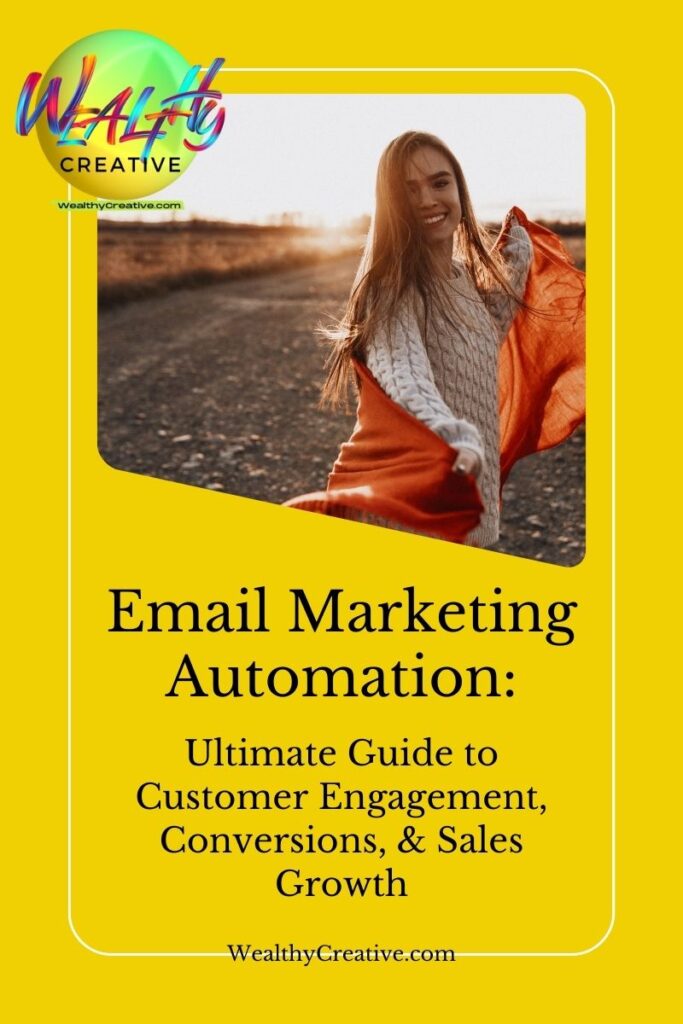Discover the ultimate guide to the best business business strategies—tips on launching, marketing, and scaling your business with free business tools, from the Wealthy Creative.
- Key Takeaways – Best Business Business Strategies for Sustainable Growth
- Understanding the Landscape of Modern Business
- Launching Your Own Business: A Step-by-Step Guide
- Leveraging Technology: Tools for Efficiency
- Building a Sustainable Business for the Future
- Common Challenges and How to Overcome Them
- The Role of Innovation in Modern Business
- More Articles from Wealthy Creative!
As a writer at Wealthy Creative (WealthyCreative.com), I share my most powerful insights on building the best business business from the ground up. From market research to leveraging free business tools, this comprehensive pillar page equips you with actionable strategies to thrive in today’s competitive landscape.
Also Read: 101 Best Coworking Spaces for Creatives!
Key Takeaways – Best Business Business Strategies for Sustainable Growth
- Defining Success: Understand what makes a business truly successful beyond revenue—value creation, innovation, and sustainability.
- Optimal Models: Identify the best business business models—from ecommerce to SaaS—and choose one aligned with your strengths and market needs.
- Lean Launch: Validate your idea, secure funding, and use free business tools to minimize upfront costs and accelerate growth.
- Marketing Mastery: Deploy SEO, content marketing, social media, and paid ads to amplify visibility and drive conversions.
- Tech Stack Essentials: Leverage automation, CRM, and analytics platforms—many with free business tiers—to streamline operations and boost productivity.
- Financial Health: Implement budgeting best practices, explore funding options, and adopt accessible accounting solutions to maintain a solid fiscal foundation.
- Sustainability & Innovation: Embed environmental and social responsibility into your core, fostering long-term resilience and appeal.
- Challenge Navigation: Anticipate common hurdles—cash flow, hiring, competition—and apply proven tactics to overcome them.
Unlocking Success: Best Business Business Strategies for Sustainable Growth
Hello, I’m Tyler, head content writer at WealthyCreative.com. Over the years, I’ve witnessed countless entrepreneurs marvel at the boundless opportunities of the modern b u s i n e s s landscape—and just as many struggle to find their footing. In this pillar page, I’ll walk you through everything I’ve learned about launching the best business business, from inception to expansion. Along the way, we’ll explore practical frameworks, spotlight indispensable free business tools, and arm you with SEO-driven insights to outpace competitors. Let’s dive in.
Understanding the Landscape of Modern Business
In today’s interconnected world, launching a business demands more than a solid product or service—it requires agility, customer-centricity, and a robust digital presence.
When I first dipped my toes into content marketing, I quickly realized that successful ventures balance traditional fundamentals (like customer service and operational efficiency) with forward-thinking digital strategies. Whether you’re building a brick-and-mortar store or an online empire, grasping this landscape is your first step.
Key considerations include:
- Customer Expectations: Modern consumers expect seamless online experiences, personalized interactions, and rapid problem resolution.
- Global Competition: Digital marketplaces dissolve borders—your competitors might be local, or they might be halfway across the globe.
- Technological Evolution: From AI-driven chatbots to blockchain, tech advancements can disrupt industries overnight.
- Regulatory Environment: Data privacy laws, taxation, and international trade agreements all shape how you can operate.
By understanding these dynamics, you’ll be better equipped to position your best business business for sustainable success.
Identifying the Best Business Models
Choosing the right business model is akin to laying the foundation of a skyscraper—get it wrong, and everything above becomes shaky. I’ve found that entrepreneurs often fall in love with an idea without validating whether it’s commercially viable. Let’s explore some high-potential models:
1. E-Commerce
- Overview: Selling physical or digital products online via your own website or platforms like Amazon, Etsy, or Shopify.
- Why It Works: Low barrier to entry, scalable inventory management, and global reach.
- Considerations: Logistics, customer service, and inventory forecasting.
2. Software as a Service (SaaS)
- Overview: Subscription-based access to software hosted in the cloud.
- Why It Works: Recurring revenue, high margins, and predictable cash flow.
- Considerations: Development costs, ongoing maintenance, and churn management.
3. Consulting & Coaching
- Overview: Leveraging your expertise to advise individuals or organizations.
- Why It Works: Low initial capital, high ticket prices, and personalized service.
- Considerations: Client acquisition, time scalability, and reputation building.
4. Affiliate & Partnership Marketing
- Overview: Earning commissions by promoting others’ products or services.
- Why It Works: Minimal overhead, free business entry point, and passive income potential.
- Considerations: Dependence on third-party products and fluctuating commission rates.
5. Subscription Boxes & Memberships
- Overview: Delivering curated products or exclusive content on a regular basis.
- Why It Works: Builds customer loyalty, recurring revenue, and predictable inventory.
- Considerations: Churn reduction, sourcing unique products, and fulfillment logistics.
When selecting your model, align it with your interests, expertise, and market demand. This alignment ensures you’re not just building any b u s i n e s s, but the best business business for you.
Launching Your Own Business: A Step-by-Step Guide
Launching can be both exhilarating and overwhelming. I advocate for a lean, iterative approach that minimizes risk and maximizes learning:
- Idea Validation
- Conduct surveys, interviews, and landing page tests.
- Use free business tools like Google Forms and Typeform to gather feedback.
- Conduct surveys, interviews, and landing page tests.
- Market Research
- Analyze competitors, customer pain points, and market size.
- Tools: SEMrush (free tier), Google Trends, and Ubersuggest.
- Analyze competitors, customer pain points, and market size.
- Business Plan & Financial Modeling
- Outline your value proposition, revenue streams, and cost structure.
- Create simple financial projections using templates from free business platforms like SCORE.org.
- Outline your value proposition, revenue streams, and cost structure.
- Legal Foundation
- Choose the right entity (LLC, corporation, sole proprietorship).
- Register your business, secure permits, and open a business bank account.
- Choose the right entity (LLC, corporation, sole proprietorship).
- Minimum Viable Product (MVP)
- Develop the simplest version of your offering.
- Deploy on a small scale to test assumptions.
- Develop the simplest version of your offering.
- Branding & Positioning
- Craft a compelling brand story, logo, and messaging.
- Ensure consistency across all touchpoints—from website to social media.
- Craft a compelling brand story, logo, and messaging.
- Soft Launch & Feedback Loop
- Release your MVP to a select audience.
- Iterate based on real-world usage and feedback.
- Release your MVP to a select audience.
- Full Launch & Scale
- Ramp up marketing, partnerships, and operations.
- Monitor KPIs—revenue, customer acquisition cost (CAC), lifetime value (LTV).
- Ramp up marketing, partnerships, and operations.
Adopting this lean, feedback-driven approach means you spend less time on assumptions and more time building the best business business your market truly needs.
Marketing Strategies for Business Growth
No matter how outstanding your product, growth hinges on a robust marketing engine. Here are my go-to strategies:
SEO & Content Marketing
- Why: Organic search drives sustainable, high-intent traffic.
- How:
- Conduct keyword research with free business tools like Google Keyword Planner.
- Create pillar content (like this article) and cluster posts around related topics.
- Optimize on-page elements: titles, meta descriptions, and internal linking.
- Conduct keyword research with free business tools like Google Keyword Planner.
Social Media
- Why: Build community, drive engagement, and humanize your brand.
- How:
- Identify platforms where your audience spends time (LinkedIn for B2B; Instagram for lifestyle brands).
- Leverage user-generated content and influencer partnerships.
- Use scheduling tools (Buffer, Hootsuite’s free plan) to maintain consistency.
- Identify platforms where your audience spends time (LinkedIn for B2B; Instagram for lifestyle brands).
Email Marketing
- Why: One of the highest ROI channels—customers you own.
- How:
- Grow your list with lead magnets (e-books, webinars, free business trials).
- Segment based on behavior and demographics for personalized campaigns.
- A/B test subject lines, content, and send times.
- Grow your list with lead magnets (e-books, webinars, free business trials).
Paid Advertising
- Why: Immediate visibility and precise targeting.
- How:
- Start small with Google Ads and Facebook Ads, monitoring ROI closely.
- Use retargeting to re-engage site visitors who didn’t convert.
- Start small with Google Ads and Facebook Ads, monitoring ROI closely.
Partnerships & Affiliates
- Why: Amplify reach by tapping into established audiences.
- How:
- Identify complementary businesses and negotiate co-marketing deals.
- Launch an affiliate program with competitive commissions.
- Identify complementary businesses and negotiate co-marketing deals.
By integrating these channels into a cohesive strategy, you’ll accelerate your journey toward becoming the best business business in your niche.
Leveraging Technology: Tools for Efficiency
Efficiency and scalability often depend on your tech stack. Many platforms offer free business tiers that are perfect for startups:
| Category | Tool | Free Tier Highlights |
|---|---|---|
| Project Management | Trello | Unlimited boards, cards, and basic automation |
| CRM & Sales | HubSpot CRM | Contact management, deal tracking, email templates |
| Email Marketing | Mailchimp | Up to 2,000 contacts, basic templates, single-step automations |
| Web Analytics | Google Analytics | Real-time reporting, conversion tracking |
| Productivity | Slack | Up to 10k searchable messages, 1:1 video calls |
| Accounting | Wave | Invoicing, expense tracking, double-entry accounting |
| Design & Branding | Canva | Thousands of templates, free stock photos |
| Cloud Storage | Google Drive | 15 GB free storage |
| Website Builders | WordPress.com | Basic themes, blogging tools, SSL |
When I launched my first project, these free business tools saved me thousands of dollars while delivering enterprise-grade functionality. As you grow, you can upgrade individual tools, ensuring you only pay for what you truly need.
Financial Management: Budgeting & Funding
A thriving business is built on sound financial practices. Whether you bootstrap or seek external capital, keep these principles in mind:
1. Budgeting & Cash Flow
- Project revenues and expenses monthly.
- Use accounting software (e.g., Wave, QuickBooks) to track actuals against projections.
- Maintain a cash reserve equivalent to at least three months of operating expenses.
2. Funding Options
- Bootstrapping: Retain full control but grow more slowly.
- Friends & Family: Quick access but tread carefully to preserve relationships.
- Angel Investors & VCs: Significant capital infusion but dilute equity.
- Crowdfunding: Validate demand and raise capital—platforms like Kickstarter.
- Small Business Loans & Grants: Explore government and nonprofit programs.
3. Unit Economics & Metrics
- CAC (Customer Acquisition Cost): Total marketing spend divided by new customers.
- LTV (Customer Lifetime Value): Average revenue per user × gross margin × retention period.
- Payback Period: Time to recoup CAC from gross profit.
Focusing on these metrics ensures your business remains financially healthy and attractive to investors.
Building a Sustainable Business for the Future
Sustainability is no longer optional—it’s a competitive advantage. Here’s how I embed social and environmental responsibility into the core:
- Ethical Sourcing: Vet suppliers for fair labor practices and minimal environmental impact.
- Green Operations: Reduce energy consumption, offset carbon emissions, and minimize waste.
- Community Engagement: Partner with local nonprofits, sponsor educational programs.
- Diversity & Inclusion: Foster an inclusive culture, implement equitable hiring, and support underrepresented voices.
- Transparency & Reporting: Publish annual CSR reports and set measurable goals.
Consumers and partners increasingly choose brands that demonstrate genuine commitment to a better world. By integrating sustainability from day one, you future-proof your business business and cultivate deep trust.
Common Challenges and How to Overcome Them
Even with meticulous planning, hurdles arise. Here are the most frequent—and my go-to solutions:
| Challenge | Solution |
|---|---|
| Cash Flow Crunch | Negotiate extended payment terms; offer early-payment discounts. |
| Talent Acquisition | Tap into remote talent pools; cultivate a strong employer brand. |
| Market Saturation | Nichify your offering; double down on unique value propositions. |
| Technology Overwhelm | Audit your stack quarterly; sunset underutilized tools. |
| Regulatory Compliance | Engage legal counsel early; stay abreast of industry regulations. |
| Customer Churn | Implement feedback loops; launch loyalty programs. |
By anticipating these challenges, you’ll be better poised to adapt and keep your business on track.
The Role of Innovation in Modern Business
Innovation isn’t just about flashy products—it’s a mindset. To cultivate it:
- Cross-Functional Teams: Encourage collaboration across departments.
- Dedicated R&D: Allocate a portion of revenue to experimentation.
- Continuous Learning: Provide training programs, attend conferences, and engage with thought leaders.
- Customer Co-Creation: Involve users in product development via beta programs.
Embracing innovation keeps your best business business agile and relevant in an ever-changing market.
Frequently Asked Questions for Business Business
How do I choose between bootstrapping and seeking outside investment?
I weigh control versus growth rate. Bootstrapping retains ownership but may limit speed, whereas external funding accelerates scale at the cost of equity. Assess your capital needs, risk tolerance, and long-term vision to decide.
What’s the most cost-effective marketing channel for startups?
Content marketing paired with SEO often delivers the highest ROI over time. By creating authoritative, long-form content—like this pillar page—you attract organic traffic and build credibility without hefty ad spends.
Can I use free business tools for an enterprise-level operation?
Many free business tools offer robust features suitable for small to mid-sized operations. As you scale, conduct periodic audits to upgrade plans or migrate to enterprise solutions only when necessary.
How important is sustainability for my business model?
Extremely. Consumers and partners favor brands with genuine environmental and social commitments. Embedding sustainability not only mitigates risks but also unlocks new market opportunities and strengthens brand loyalty.
What metrics should I track in the early stages?
Focus on CAC, LTV, churn rate, and runway (months of operation remaining). These indicators provide a clear view of your financial health and growth trajectory.
How can I ensure my business stays innovative?
Foster a culture of experimentation with cross-functional teams, allocate resources to R&D, and maintain close ties with customers to co-create future offerings.
By following this comprehensive guide, you’re well on your way to building the best business business—one that’s agile, sustainable, and primed for long-term success. Remember, entrepreneurship is a journey, not a destination. Stay curious, stay customer-obsessed, and never stop innovating. Here’s to your success!
More Articles from Wealthy Creative!
How to Generate Passive Income with No Initial Funds in 2025
Want to learn how to generate passive income without investing any money? With no start-up…
Email Marketing Automation: Ultimate Guide to Customer Engagement, Conversions, & Sales Growth
Conquering the Digital World: A Beginner’s Guide to Digital Marketing Software
11 Best Email Blast Services of 2025 to Increase Sales & Automate Marketing
Ultimate Guide to Data-Driven Marketing Platform Services
31 Passive Income Ideas to Build Wealth for Beginners (2025)
GoHighLevel Integrations: Supercharge Your Marketing with Powerful Connections
WPFunnels vs ClickFunnels: A Comparative Analysis for Marketers On the Fence
101 Best Businesses to Get Into for Maximum Profitability!
Stop the Phone Tag! How Appointment Scheduling Software Can Save Your Business Time and Money
30 Ways to Make Money While You Sleep in 2025
What are the highest paying passive income streams? Have you ever wanted to earn money…
10 Best Ways Make Passive Income with $100K and Build Wealth!
101 Best Coworking Space for Creatives and Inspiration!
What Is an Online Business? Introduction to Starting a Digital Business
Conquer Busywork: How a Marketing Automation Platform Can Supercharge Your Business Growth
Stuck? 101 Best Business to Business Ideas to Unblock Growth!
GoHighLevel Review: Is It Worth the Hype? Honest Insights
How to Add a WordPress Ping List to Your Website
A WordPress ping list notifies search engines about updates on your website, helping to increase…





















